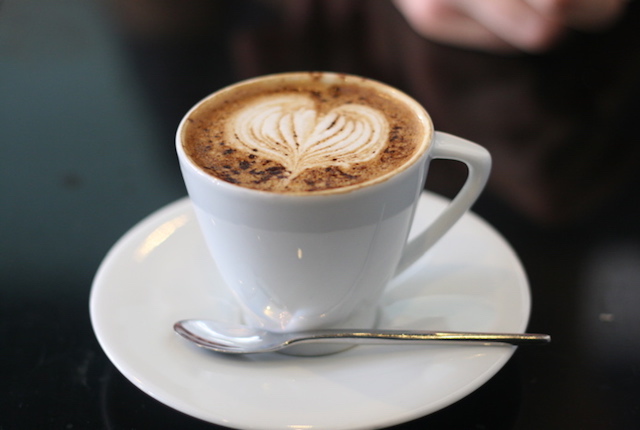
Photo courtesy of Flickr/Karen
For many, satisfying a coffee fix consists of walking up to a barista, mumbling a size in Italian, and plopping down a few dollars. For other java enthusiasts, it's all about filling the top of an automatic drip coffee maker or bottom of a French press with pricey beans for a personalized flavor. Trek around the world, however, and you'll find that there's more than two ways of preparing a cup of Joe -- and none of them include scooping Folgers into a filter or popping a cup into a Keurig machine. Here are seven of those interesting methods.
1. Ethiopian Coffee
Photo courtesy of Flickr/Rod Waddington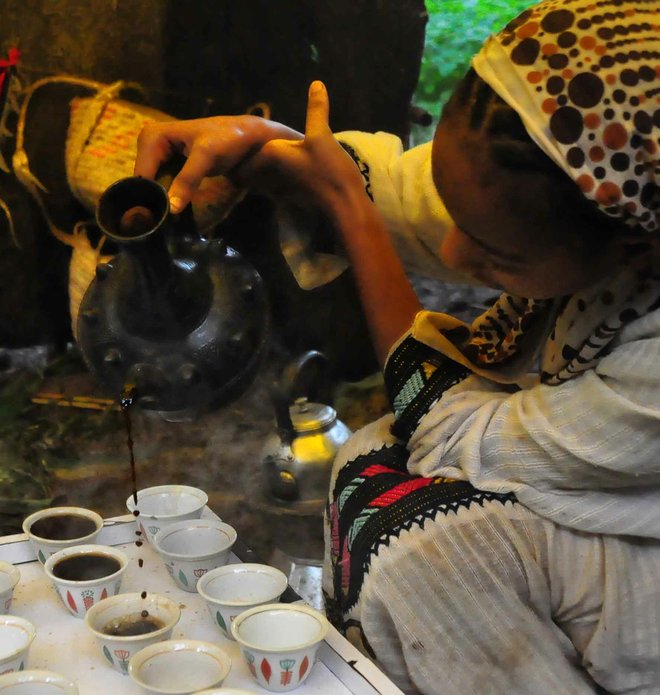
While Colombia may be most commonly associated with coffee, the brown elixir may have originated in ninth-century Ethiopia. Legend has it, a goat herder named Kaldi noticed his flock munching on an arabica tree and acting a bit jumpy, so he brought the beans to a local monastery. Concerned that the stimulating effects would distract them from praying, the monks threw the beans on a fire. It turns out they became enraptured by the aroma and coffee was born. That being said, chewing coffee beans for a caffeine fix had been in practice long before Kaldi’s goats trotted into the picture. And although the beverage has a long history in the east African country, no one can confirm the origin since Kaldi’s tale didn’t appear in writing until about the 16th century.
Today, the Ethiopian coffee ceremony can take a few hours. The beans, which are grown on hillsides with plenty of leafy coverage, have an acidic flavor that’s reminiscent of wine. They’re roasted in a flat pan over an open fire until they’re black and shiny. The aromatic result is paraded around the room, as each participant is offered a whiff. Next, the preparer pulverizes the beans with a mortar and pestle and transfers them into a pot known as a jebena. Boiling water is then mixed in and the resulting gritty liquid is strained several times. Just before the coffee is served, frankincense and other incenses are burned to accentuate the bouquet. Snacks such as popcorn are also served. In certain parts of Ethiopia, plenty of sugar is added (salt is preferred in others). According to tradition, guests are expected to drink at least three cups before departing, as the third round bestows a blessing.
2. Turkish Coffee
Photo courtesy of Flickr/Borya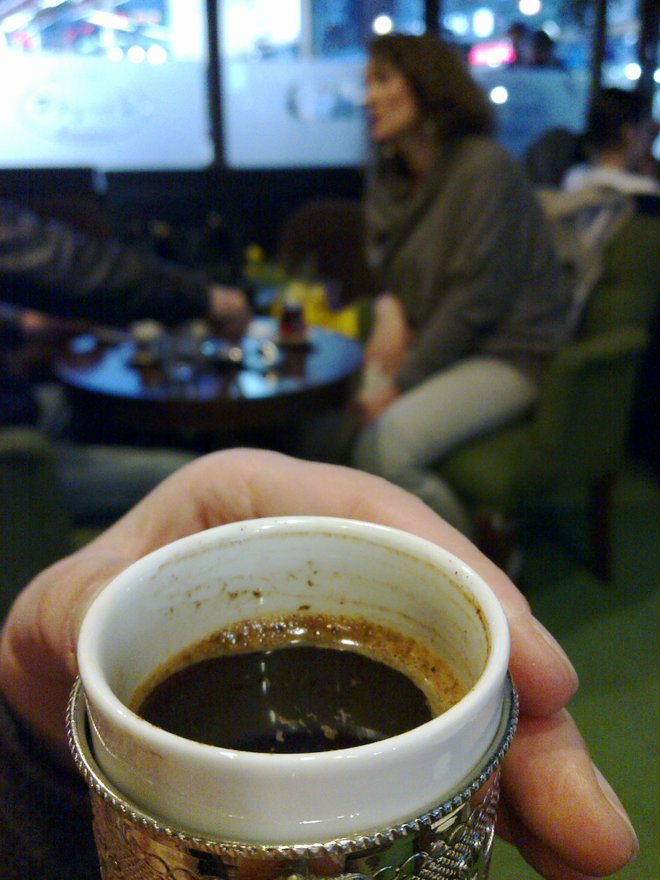
Muddy and sweet, Turkish coffee has a rich history. Some say Turkey’s caffeinated days can be traced back to the mid-16th century when two immigrants from Yemen opened cafes in Istanbul. Other historians note that the drink, which was popular in the Hejaz region (now western Saudi Arabia), was already being consumed in the countryside and only became well-liked within the cosmopolitan crowd and royal court when the cafes opened in the Turkish capital. No matter which story you believe, there’s no doubt coffee and cafes (also known as kaveh kanes) impacted several areas of Turkish life. Over the centuries, Turkish cafes have become known as the gathering place of forward-thinking artists and conservative nobles. The trade has also been a source of corruption, as coffee producers were known to dilute the beans with chickpeas and other cheap ingredients to score a big profit.
Unlike some coffee beans in the west, Turkish grinds have a fine, silt-like texture. In preparation, water and sugar are placed inside a cezve (or Turkish coffee pot) and boiled. Grinds will likely float to the top. When they begin to sink, however, they’re stirred into the liquid. The water is then reheated until the mixture froths, but doesn’t boil. The frothier the blend, the richer the coffee will be. When served, most of the grounds settle at the bottom of the cup. That being said, drinkers typically stop sipping when there’s about a fifth of the liquid left. But that’s not the end of the ritual. Turks have been known to flip the cup over and look into the resulting drips to predict the future. For example, a coffee ring symbolizes new love, while a broken ring indicates divorce.
3. Kyoto-Style Cold Brew
https://www.instagram.com/p/BGnS-fTPsKA
While cold brew coffee has gained considerable popularity in the U.S. in the past decade or so, Japanese brew masters have been using cold water since at least the 1600s. This practice has also inspired modern Kyoto coffee makers. The history is a bit unclear (differing evidence points to the Dutch and Peruvians as the original brewers of coffee concentrate, which is essentially what cold-brewed coffee is). One reason coffee concentrate became popular centuries ago, however, was that it made carrying java on long sea voyages much easier.
Making Kyoto-style cold brew coffee requires a contraption that looks like a series of beakers. To start, the filtered water slowly drips over coarsely ground beans (similar to a French press). Depending on the maker, there can also be filters and some more mesmerizing glassware that looks like it belongs in Dr. Frankenstein’s lab. Brewing a pot of coffee can take between six and 24 hours. Experts tend to get particular about adjusting the valves in order to perfect the drip speed. And while a Kyoto-style coffee maker can be pricey, the smooth, flavorful result might just be worth the investment for coffee connoisseurs.
4. Colombian "Sock" Coffee
Photo courtesy of Flickr/CIAT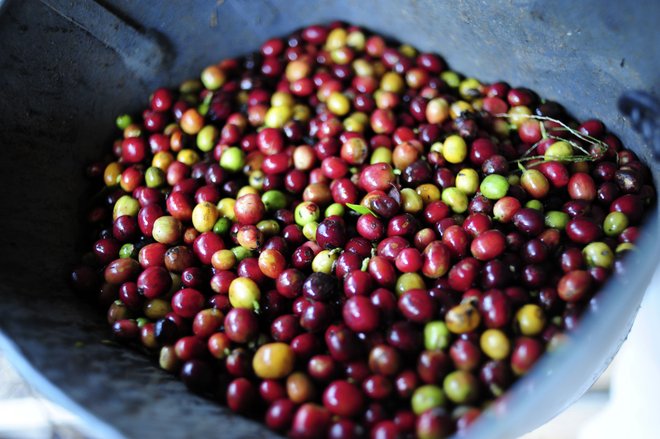
Did you know that early coffee filters were made of cotton, burlap, or another similar fabric? Did you also know that this practice continues to be popular in several locations around the world, including Thailand and Colombia? Well, now you do.
As for using a sock, here’s what you need to know. Much like an automatic drip filter, the cloth (which resembles a sock) is filled with grounds. Water is then poured over it. The trick is to grind the beans until they’re the right texture for the fabric. In other words, if the grounds are too fine, water won’t seep through them. On the other hand, if they’re too coarse, the result will be watery and flavorless. In Colombia, the socks are used in homes as well as in cafes.
5. Siphon Coffee
Photo courtesy of Flickr/Nicholas Lundgaard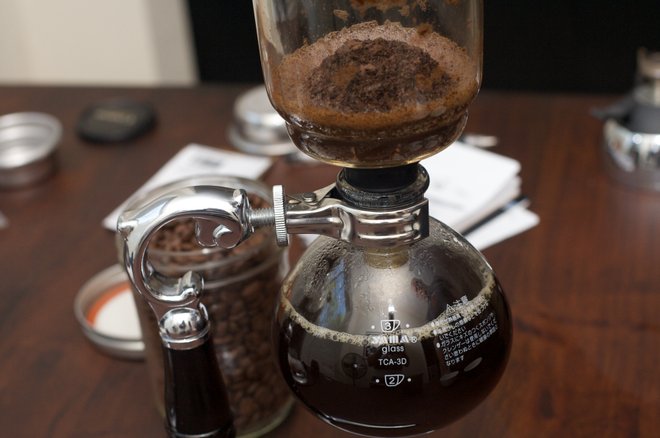
The siphon pot has a German father and French mother. For anyone unfamiliar with this dramatic and delicate preparation, the coffee maker looks like a tabletop hourglass, except it’s filled with coffee grounds instead of sand. The first known siphon coffee pot was created by man named Loeff in Berlin. Although his 1830 invention only had moderate success, a French woman named Marie Fanny Amelne Massot improved the process and patented it in 1840. Her version was designed with a crown on top and sculpted spigot.
The siphon process requires heat, pressure, and a vacuum. Water is placed in the bottom glass chamber and heated from below until the steam propels the water up the flute and through the top bulb’s cloth filter. The beans, which are ground to a medium-coarse texture, are added to the top container and gently stirred. After about 35 seconds, the heat is removed and the liquid goes from the top chamber to the bottom one. This process usually takes less than one minute and is known to receive a few oohs and ahhs. The coffee is then poured or drained from the bottom and ready to drink. Given that the early siphon coffee makers were manufactured long before the invention of shatterproof glass, the vacuum process presented several opportunities for the coffee maker to break. Modern versions are sturdier, but still finicky.
6. Scandinavian and Vietnamese Egg Coffee
Photo courtesy of Flickr/Anthony Tong Lee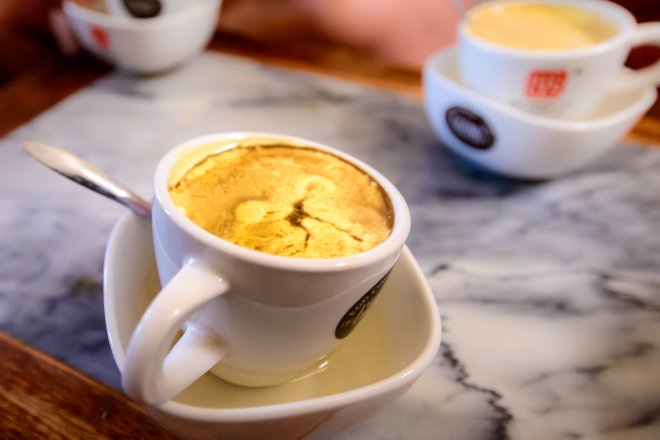
There are at least two different coffee preparations that include an egg — one from Scandinavia and the other from Vietnam. In Scandinavia, egg whites are mixed into the grounds to help the flow of hot water through the beans. Sometimes egg shells are also added. Some say this results in a non-bitter, light, and smooth blend, while others claim it turns the taste a a little acrid.
In Vietnamese cafes, egg coffee is a mixture of egg yolks, sugar, condensed milk, and coffee. For this recipe, the barista whips the egg with sugar and coffee,. The result is a rich, dessert-like flavor, which can be compared to tiramisu. Rumor has it, the drink was invented when milk was scarce in Vietnam and eggs were used as a dairy substitute.
7. Vietnamese Phin-Filtered Coffee
Photo courtesy of Flickr/Lemsipmatt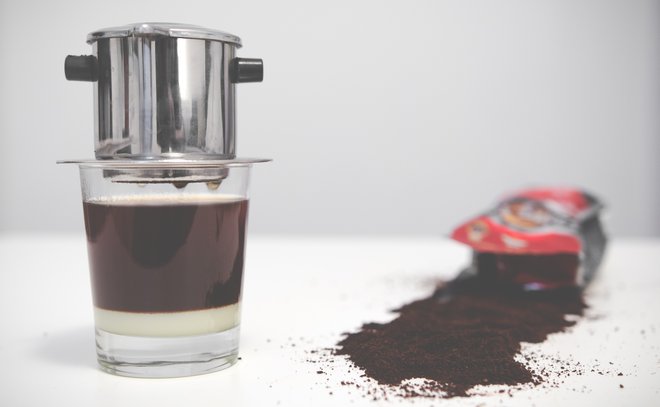
Believe it or not, Vietnam is the second-largest producer of coffee in the world. Farmers focus on the robusta bean, which isn’t as well known as arabica and produces a mellow flavor that’s suitable for blending. When it was introduced by the French in Vietnam, the drink wasn’t as popular as tea (and it still isn’t). However, the ultra-sweet coffee still boasts passionate fan base.
Vietnamese cafes typically use a phin, which is a small brewer that sits on top of the receptacle and makes one cup of coffee at a time. Coarse grounds are placed under a metal filter before water is poured through. (A similar process is also used in India). Much of the coffee’s flavor also comes from condensed milk. When coffee was introduced in the 19th century, the Vietnamese didn’t drink a lot of milk for a variety of reasons — namely that it went bad quickly in the tropical climate. So instead, folks mixed in the creamy and sweet canned milk into the hearty blend.
Related Stories:
- The 8 Best Coffee Cities Around the World
- The Best Hotel Coffee Bars Across the States
- Brew Better Hotel Coffee In 4 Easy Steps
Pinterest image courtesy of Flickr/Basheer Tome.
All products are independently selected by our writers and editors. If you buy something through our links, Oyster may earn an affiliate commission.



